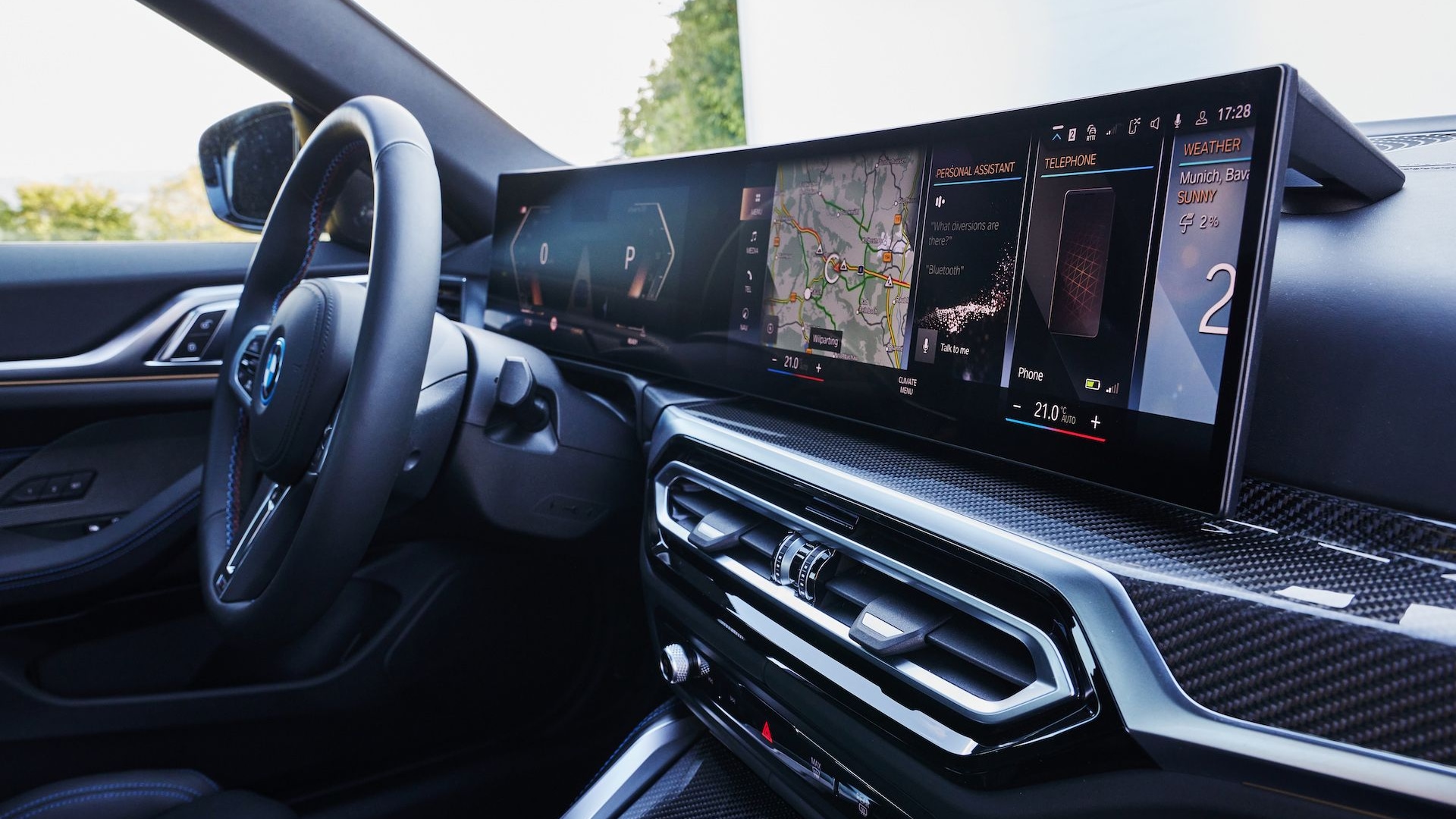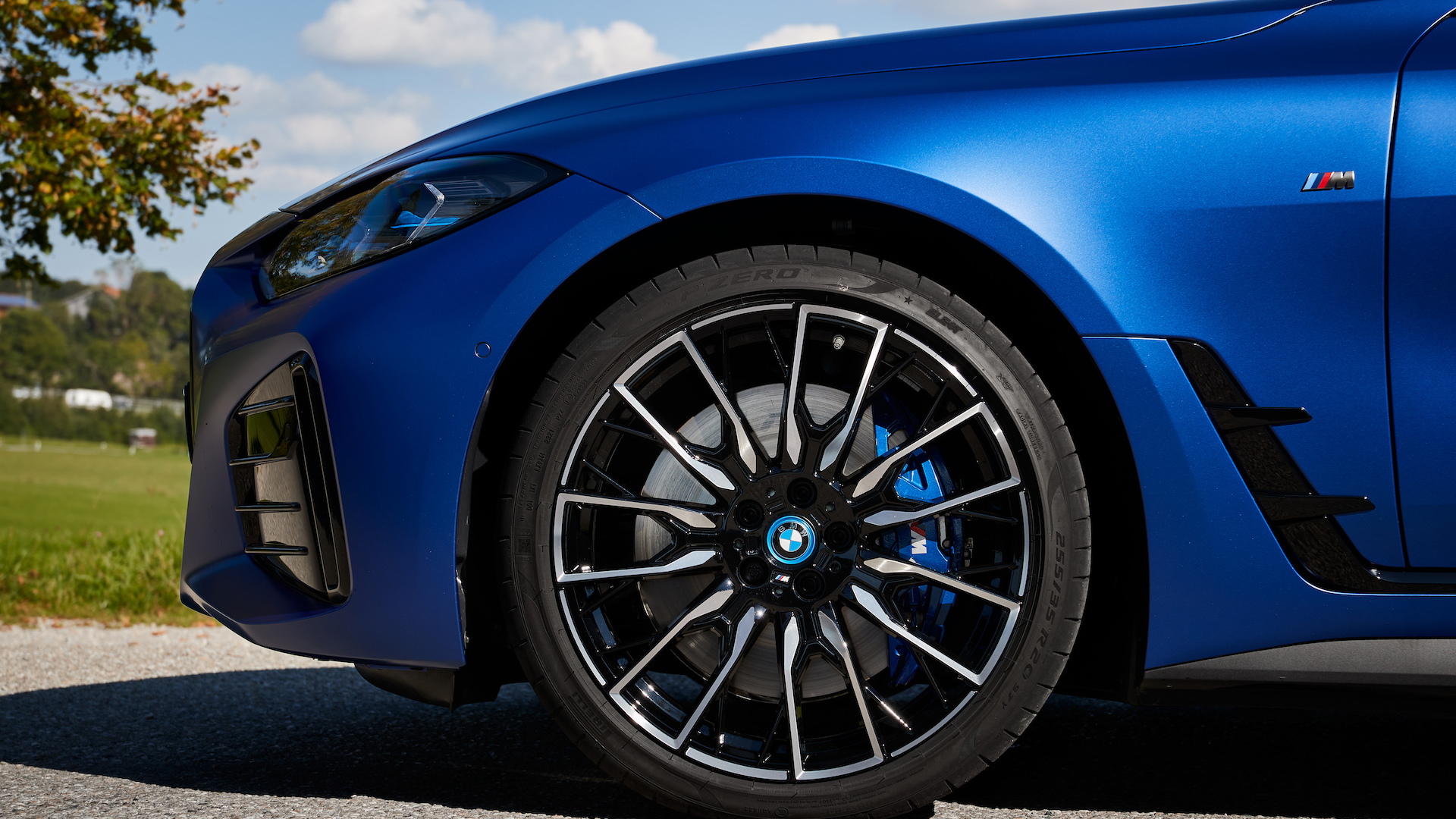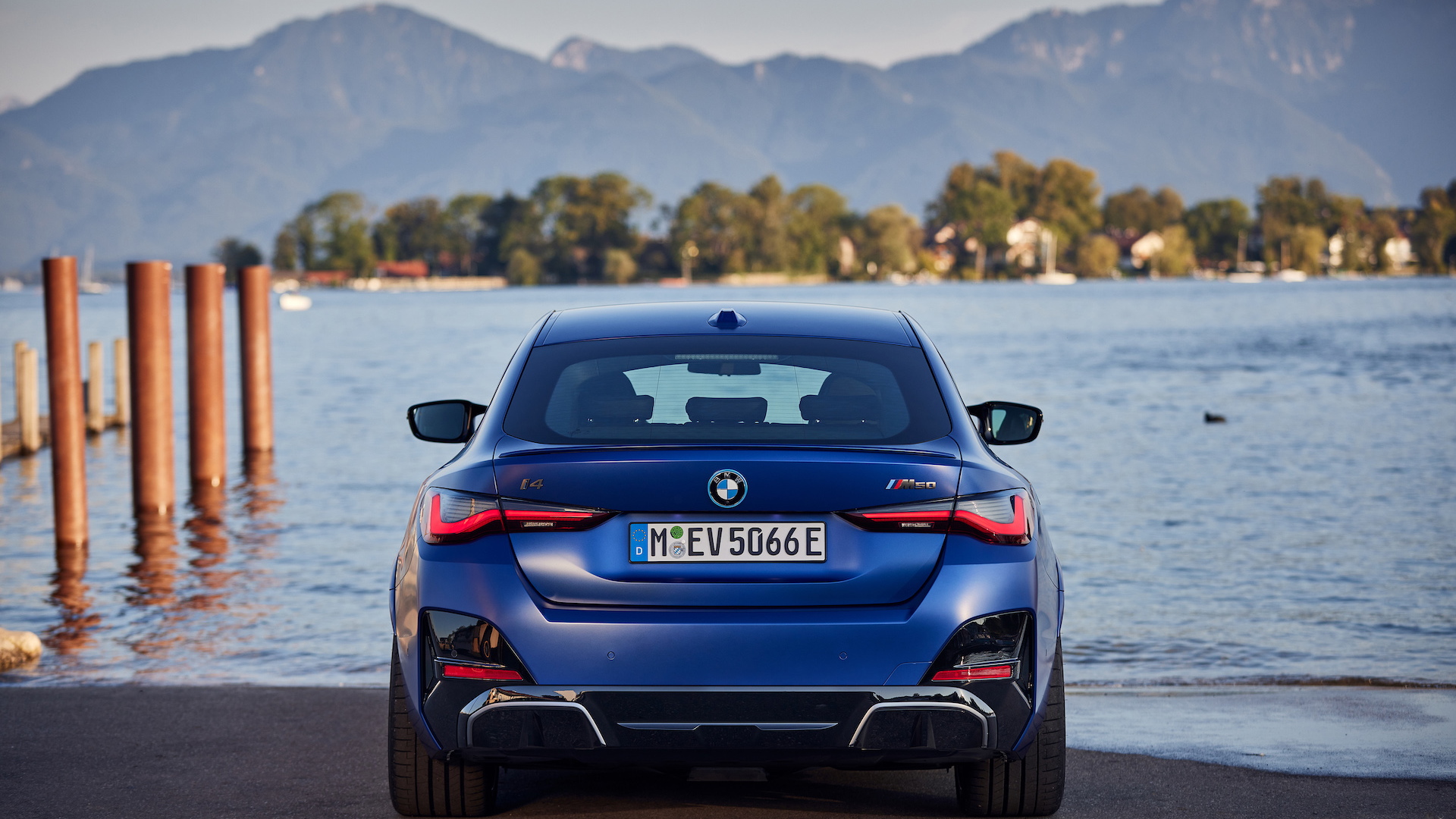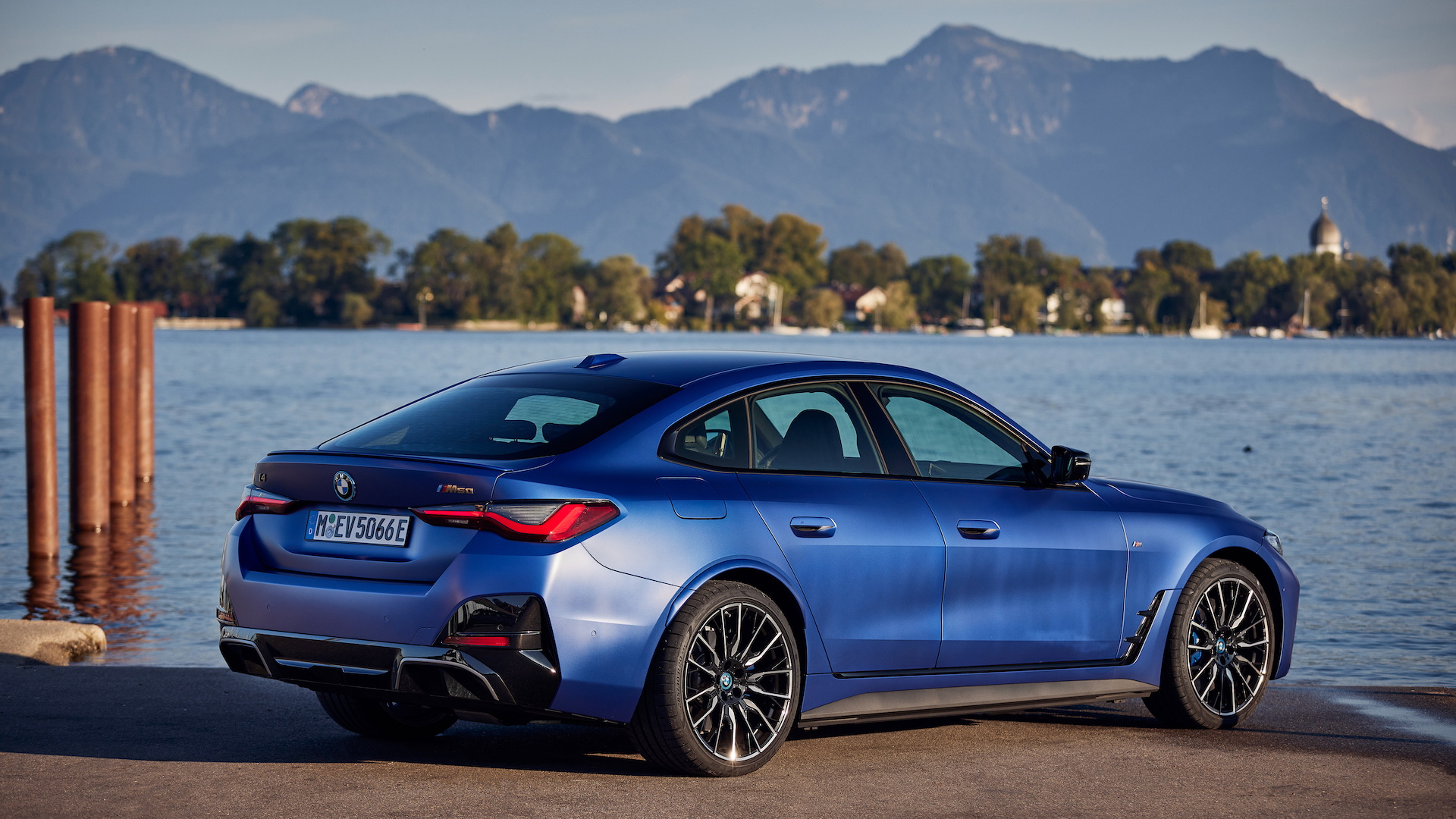BMW began its push toward electrification with a pair of purpose-built cars on carbon-fiber platforms, the i3 EV (with or without a gas-engine range extender) and the plug-in hybrid i8. For the M performance division’s first EV, the 2022 BMW i4 M50, the German brand takes a half-step back to a vehicle built for internal-combustion engines, but now fitted with battery-electric power. The result is a fun car that required limited investment dollars, but one that is also compromised.
The BMW i4 M50 swaps out the gas engine of the 4-Series Gran Coupe for a dual-motor all-wheel-drive electric powertrain. While it’s not EV state of the art, it’s a compelling car that captures some BMW magic, with plenty of room for improvement.
I could feel some of that BMW magic behind the wheel during my week with the i4 M50. The car’s M-worthy power became immediately obvious. BMW outfits the i4 M50 with 255-hp front and 308-hp rear synchronous motors. They combine to make 469 hp and 538 lb-ft of torque while providing all-wheel drive. Engage the Sport mode, and a boost function increases the output to 536 hp and 586 lb-ft of torque for more than 10 seconds at a time. In that mode, the i4 M50 will rocket from 0-60 mph in 3.7 seconds and on to a 130 mph top speed, or 140 mph with the High Performance package, according to BMW. It’s been even faster in magazine testing, hitting 3.3 seconds in the 0-60 mph run for Car and Driver—even quicker than the line-topping M4.
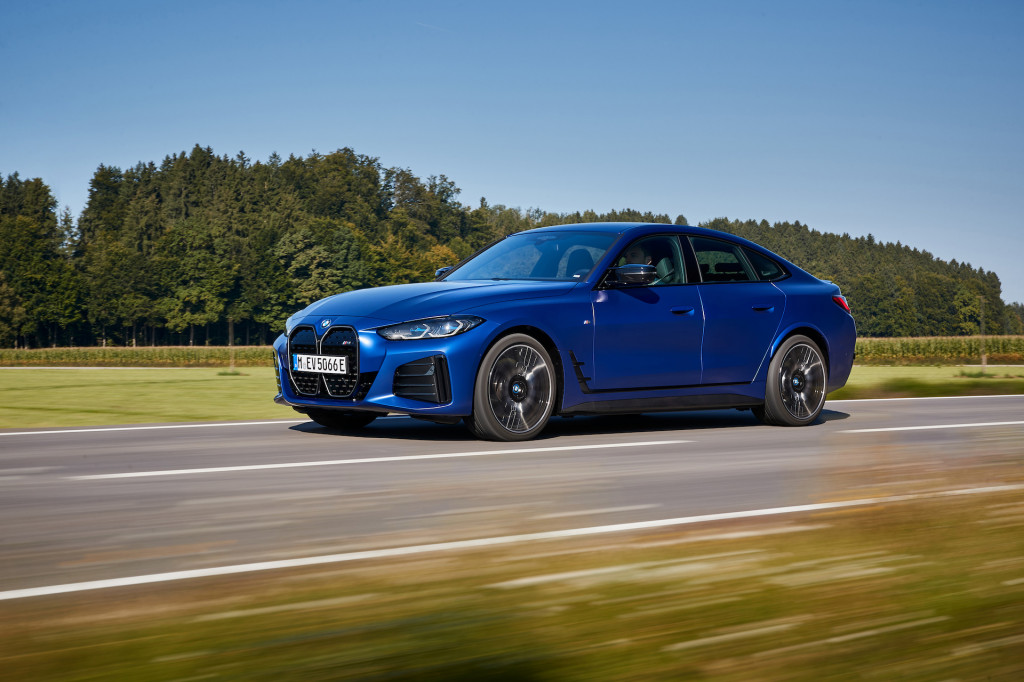
2022 BMW i4 M50
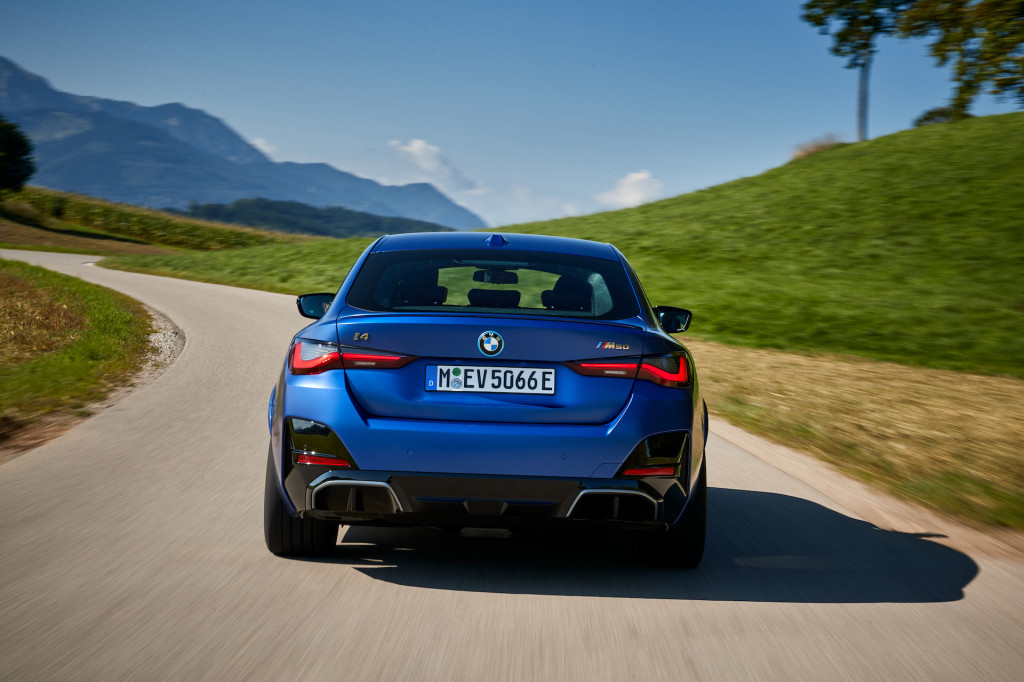
2022 BMW i4 M50

2022 BMW i4 M50
The M50’s electric motors feel different than the fantastic twin-turbo 3.0-liter inline-6 in the M4. It doesn’t sound the angry howl of the M4’s engine, opting instead for a digitally created spaceship whirr that can be disabled. The power is more immediate than the horses that take a slight pause before they giddyup in one of the finest gas engines money can buy. The i4 M50’s passing punch hits hard and fast with a mere flick of the right foot, pushing you past that slow-motion Camry before you can say, “Are you going anywhere?!”
Drivers have a choice of brake regeneration modes in the i4. Shift to B mode, and you can mostly drive with one pedal, only activating the friction brakes when coming to a stop from higher speeds. B mode also helps for the on-off style of driving needed for a track or attacking a canyon road. I preferred it for neighborhood driving with many stops, but mostly opted for the default coasting function in Drive because it just made the i4 seem like a normal BMW. Drivers can also dig into the iDrive screen to adjust the amount of regen in Drive.
A hefty burden to overcome
Power in an electric M car is expected, but could the M team overcome the effects of weight due to a heavy battery pack?
The i4 M50 uses a tweaked version of the brand’s CLAR (CLuster ARchitecture) and comes cloaked in the same body as the gas-powered 4-Series Gran Coupe. CLAR is an advanced platform that uses aluminum, steel, and even carbon fiber to save weight, but it’s not optimized for a battery electric vehicle, and those compromises show up in the i4 in both space and weight.
The i4’s 324-cell, 81.5-kwh pack takes up 4.3 inches of space beneath the floor and lowers the car’s center of gravity by 1.3 inches compared to a 3-Series sedan. However, it adds considerable weight. The i4 M50 carries 5,018 lb compared to 3,792 lb for the gas-powered 430i Gran Coupe.
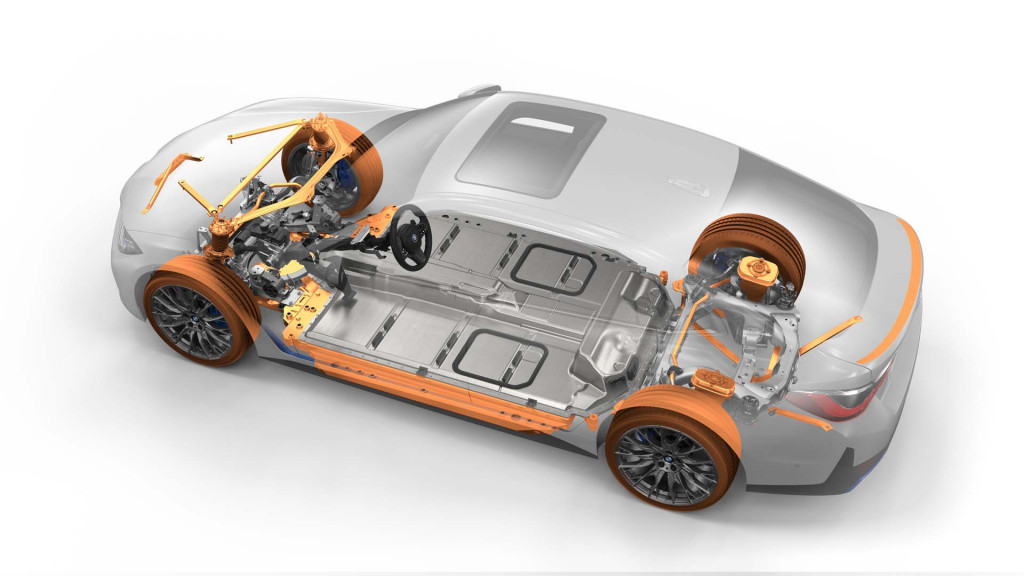
BMW i4 production and technology
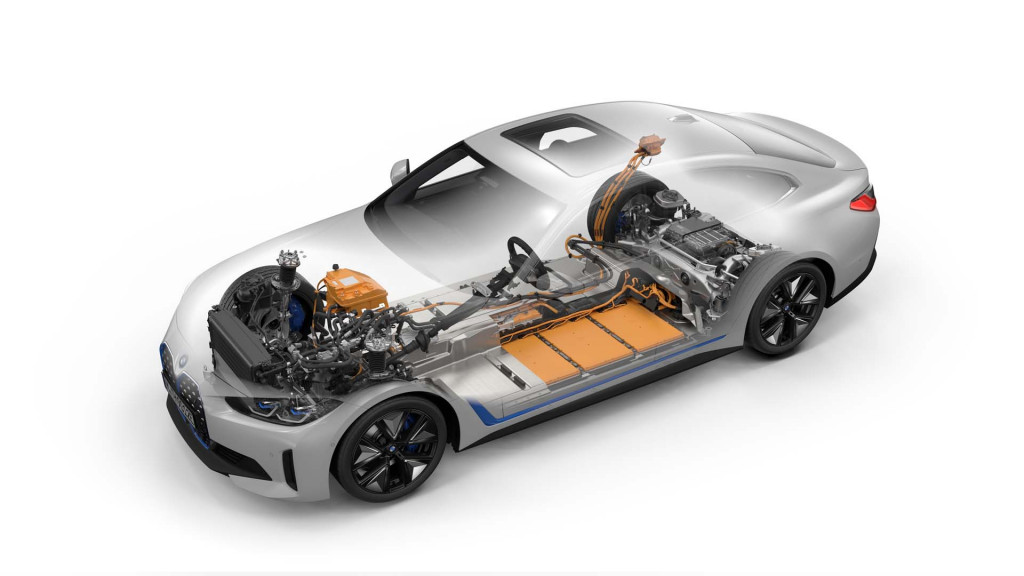
BMW i4 production and technology
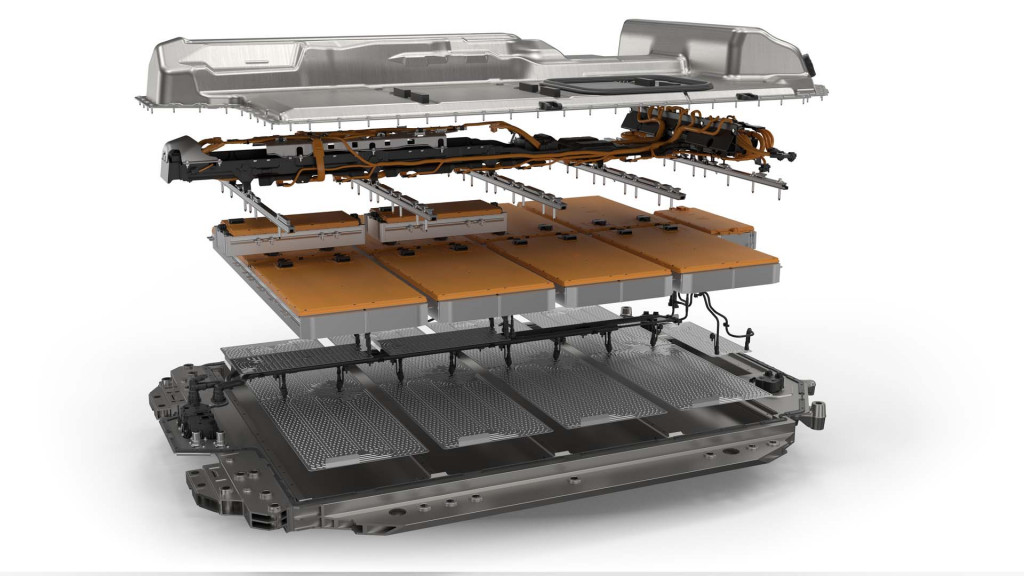
BMW i4 production and technology
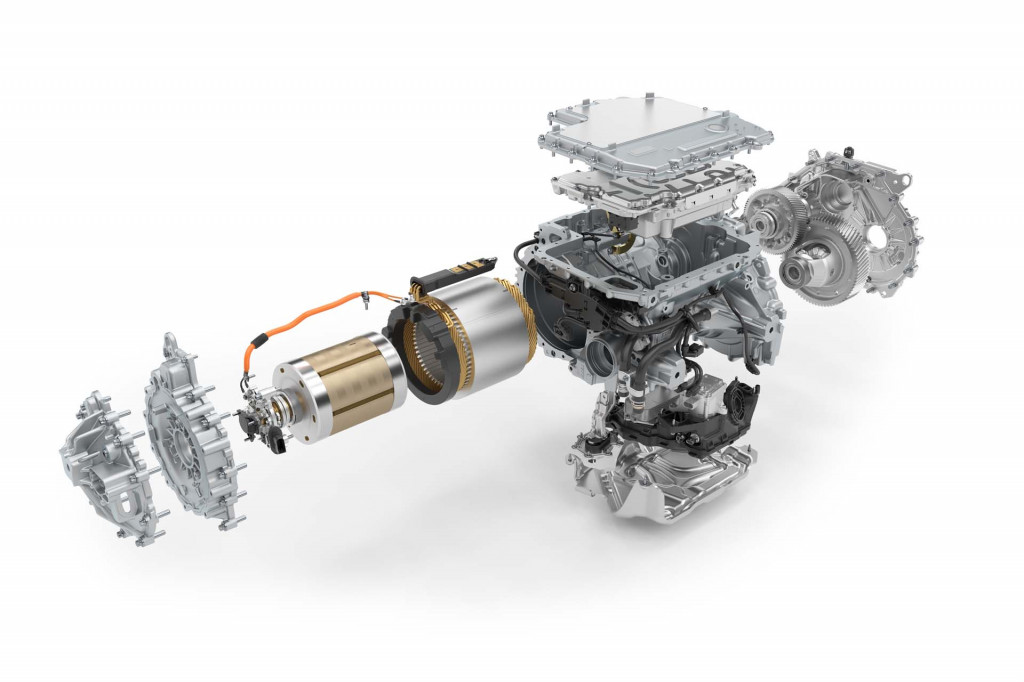
BMW i4 production and technology
BMW makes some changes from the ICE version of the chassis to help the car wear that weight well. Bolted to the floor and connected to the front subframe, the battery pack becomes a structural component. A standard rear air suspension on all i4s provides load-leveling and counters any sag due to the battery’s weight. Up front, an aluminum shear panel teams with the high-voltage battery housing to act as another structural element. The M50 model also gets adaptive M dampers, specially tuned anti-roll bars, and a front strut tower brace.
While the M50 model comes standard with staggered 19-inch wheels and tires, my tester had the High Performance package that adds 255/35R20 front and 285/30R20 rear Pirelli P Zero PZ4 Elect summer tires. That gave the car some pretty serious footwear to go with its serious power.
The back-woods test
I put those shoes to the test on the twistiest roads I could find outside of Milwaukee, where the i4 M50 outperformed its weight. The low-set center of gravity limited the body lean like I’d expect from a sporty BMW rather than a 5,000-lb car. The i4 reacted quickly to inputs from the quick, direct steering (which could use more feel), and was happy to change direction again and again. The Pirellis gripped well, and while the ride was firm it didn’t pound over a large patch of broken pavement. B mode slowed the car for corners but not enough, and the brakes felt natural and strong when I had to use the pads and calipers.
I haven’t driven the i4 M50 on a racetrack—it’s not intended as a track car anyway—but instrumented testing tells the tale of just how well it handles. Car and Driver reports it has 0.97 g of grip on a skidpad compared to 1.03 g for the M4, which weighs some 1,200 lb less. Still, 0.97 g of grip qualifies as real performance territory, and shows that the low center of gravity offsets much of the handling losses that would normally be caused by so much weight. At two-and-a-half tons, the i4 M50’s handling is compromised, but not by much.
The bigger compromise comes in packaging. The switch to EVs allows automakers to rethink the form factor of cars as motors and battery packs take up much less space than engines, transmissions, driveshafts, and exhaust systems.
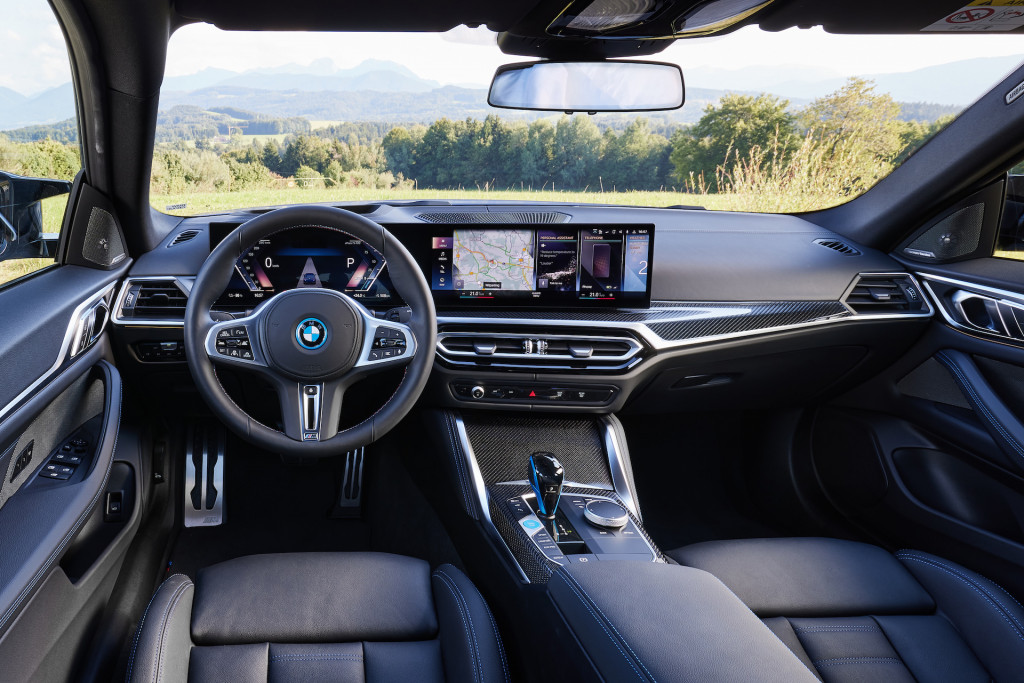
2022 BMW i4 M50
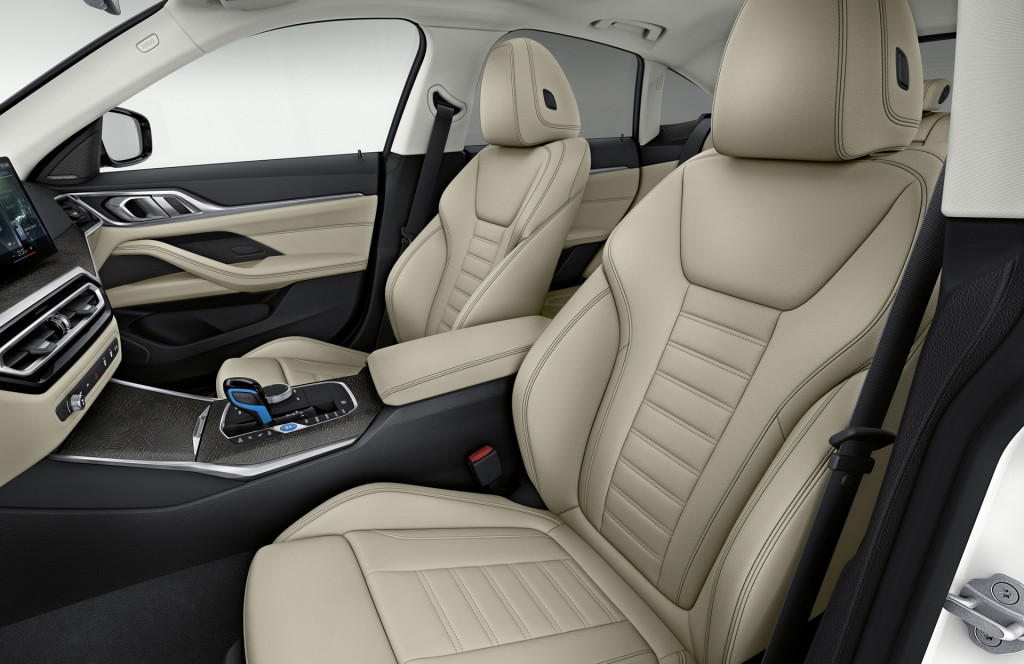
2022 BMW i4
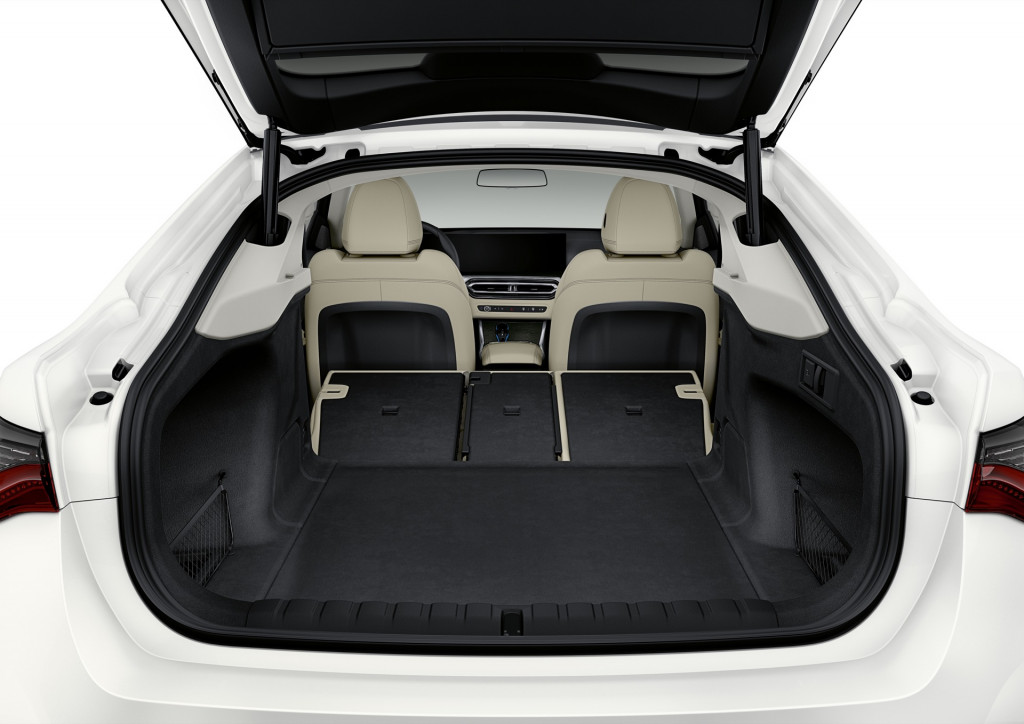
2023 BMW i4 eDrive35
As a 4-Series Gran Coupe with a battery and electric motors instead of an engine, the i4 doesn’t enjoy that advantage. In fact, it doesn’t even have a frunk because the power electronics and front motor sit under the hood. The floor-mounted battery also intrudes on interior space, though not too much. Front seat occupants have 0.4 inch less head room, and rear seat passengers lose 0.7 inch of leg room. The Gran Coupe’s hatchback cargo hold suffers, too, due to the rear air suspension, but it still offers good cargo space, especially with the rear seats folded down.
Not so home on the range
Performance also compromises range. While the i4 eDrive40 gets 301 miles of electric range, the M50 cuts that to an EPA-rated 270 miles; the optional 20-inch wheels cut it further to 227 miles. During my 104 miles behind the wheel, I averaged a modest 2.3 miles per kwh and noticed that the car had averaged 2.5 mi/kwh over its first 2,556 miles. My results are right in line with the EPA’s estimated 2.36 mi/kwh, though over its brief lifetime, the test car proved more efficient than estimated.
The i4 uses a 400-volt electrical architecture that can accept a DC fast-charge up to 195 kw, which can add 90 miles of range in 10 minutes. Buyers also get $100 in credits to use at EVgo fast chargers throughout the country. On a Level 2 home charger, it can charge at a rate of up to 11 kw and go from empty to full in less than eight hours.

2022 BMW i4 M50
The 2022 BMW i4 M50 starts at $66,895, and my tester ran $76,670 with the aforementioned High Performance package ($2,500), a $1,700 Driver’s Assistance package, a $700 Parking Assistance package, and a smattering of other options. The starting price is about $3,000 more than a Tesla Model 3 Performance, which has 315 miles of range, is just as fast or faster, and uses its space more efficiently.
However, Tesla doesn’t match BMW build quality or feel, and I turned in the key thinking why would anyone buy a Tesla again now that BMW has an EV? Well, range and space are the reasons. However, the 2022 BMW i4 M50 is an excellent first EV from the M division and future M EVs will only improve. Batteries will get lighter, handling will get sharper, range will increase, and purpose-built platforms, such as the Neue Klasse platform due in 2025, will open up more space. Tesla still has some important advantages for now, but the electric future is bright for BMW M.
